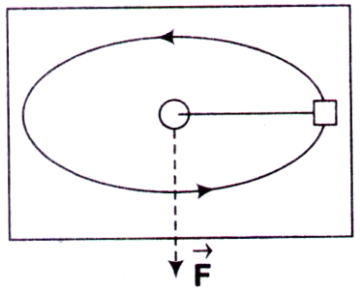A car is moving with constant linear acceleration a along horizontal X-axis. A solid sphere of mass M and radius R is found rolling without slipping on the horizontal floor of the car in the same direction as seen from an inertial frame outside the car. The acceleration of the sphere in the inertia frame is
A. $$\frac{1}{7}a$$
B. $$\frac{2}{7}a$$
C. $$\frac{3}{7}a$$
D. $$\frac{5}{7}a$$
Answer: Option A
Related Questions on Classical Mechanics
A. increases till mass falls into hole
B. decreases till mass falls into hole
C. remains constant
D. becomes zero at radius r1, where 0 < r1 < r0
A. $$\frac{c}{3}$$
B. $$\frac{{\sqrt 2 }}{3}c$$
C. $$\frac{c}{2}$$
D. $$\frac{{\sqrt 3 }}{2}c$$
The Hamiltonian corresponding to the Lagrangian $$L = a{{\dot x}^2} + b{{\dot y}^2} - kxy$$ is
A. $$\frac{{{p_x}^2}}{{2a}} + \frac{{{p_y}^2}}{{2b}} + kxy$$
B. $$\frac{{{p_x}^2}}{{4a}} + \frac{{{p_y}^2}}{{4b}} - kxy$$
C. $$\frac{{{p_x}^2}}{{4a}} + \frac{{{p_y}^2}}{{4b}} + kxy$$
D. $$\frac{{{p_x}^2 + {p_y}^2}}{{4ab}} + kxy$$
A. circular
B. elliptical
C. parabolic
D. hyperbolic


Join The Discussion